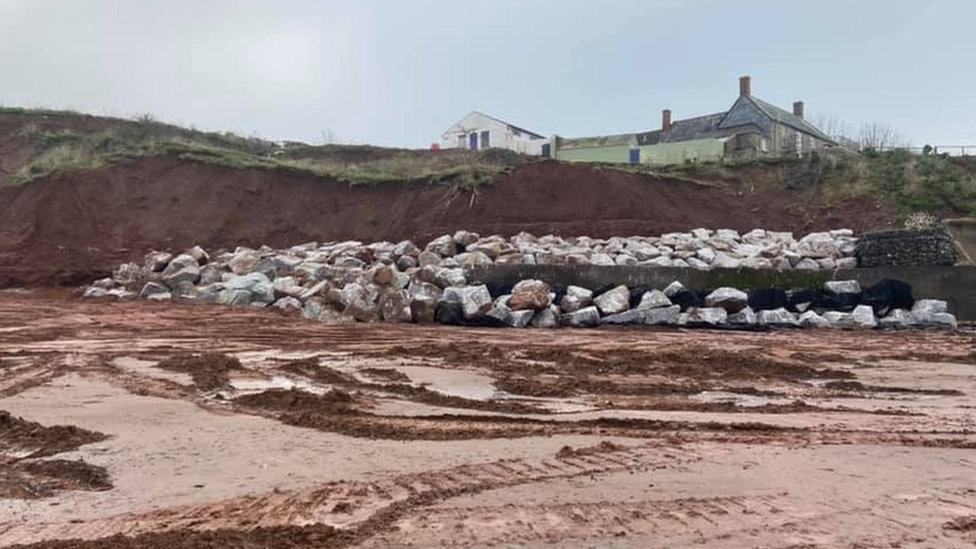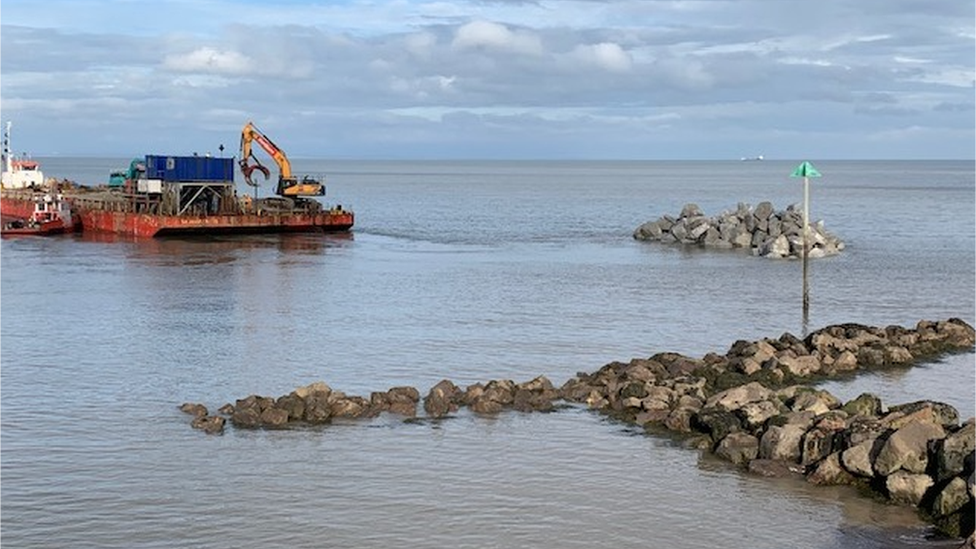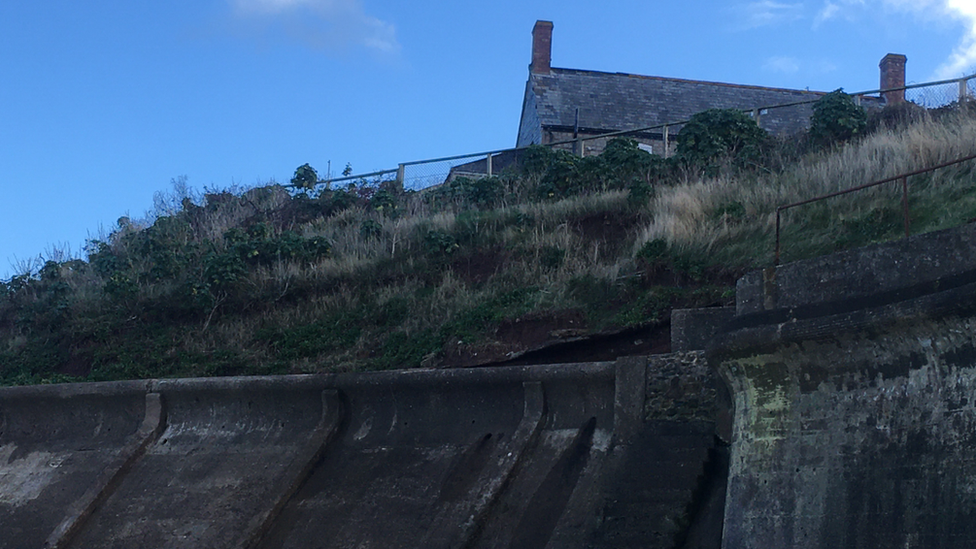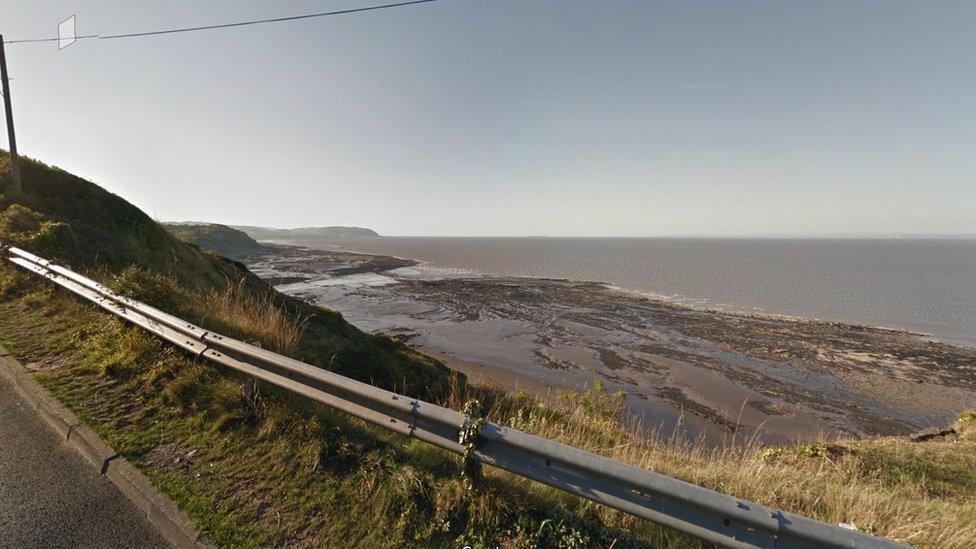Work on 'vital' Somerset coast road at Watchet approved
- Published

The £3.7m project will boost sea defences at Blue Anchor Bay
A £3.7m scheme to protect a coastal road and nearby homes from sea erosion is to go ahead this spring.
Under the measures, more rock armour - large boulders - will be installed to boost the coastline between Blue Anchor Bay and Watchet in Somerset.
Mesh will also be used to re-profile cliffs as part of the work approved by Somerset West and Taunton Council.
The coastline has seen significant erosion, with the B3191 being closed at the Watchet end since mid-January.
Over the years emergency repairs have been carried out at Blue Anchor Bay to prevent the pub and the road crumbling into the sea. In 2020 1,800 tonnes of granite rock armour was delivered by boat to shore up the base of the cliff and prevent further landslides.
The existing sea defences are a mixture of angled concrete walls, constructed between the 1920s and 1980s.
In one of its final actions before being abolished and replaced by the new unitary Somerset Council on 1 April, Somerset West and Taunton Council granted planning permission for the new scheme.
It will enable work to start once the granite rock armour is delivered by boat in the spring, the Local Democracy Reporting Service said.

Rock armour was deposited at Blue Anchor Bay in November 2020
The new, more permanent scheme will see more rock armour installed along the coastline, with mesh and turf being used to bolster the cliffs to prevent future cracks or landslides.
Councillor Andrew Sully, portfolio holder for environmental services, said vessels had been secured to bring rock from a quarry in Scotland to Blue Anchor in late April and May.
"A total 13,500 tonnes of rock will be collected from the quarry and transported by sea going vessels to Blue Anchor, before being transferred at sea to a barge to land the rock on the beach," he said in a report.
"The rock will then be placed against the cliffs to prevent wave undercutting.
"During the same process, the upper cliffs will be re-profiled to a 'stable angle of repose' and then 'hydro seeded' to promote vegetation growth to further aid stabilisation."

The Blue Anchor Pub Seen From The Beach Below
Councillor Loretta Whetlor, who represents the adjoining Watchet and Williton ward, said it was essential to protect the road against any further erosion, until the route could be moved inland in the future.
She said: "If the properties along that road disappear into the sea, there will be no road.
"We are already suffering in Watchet by having the road closed. We need to keep the other end open, because that also has roads going off it so you can get back onto the A39.
"We've got to protect the people who live there and we've got to keep that road"

The B3191 Cleeve Hill has been closed indefinitely due to coastal erosion
Councillor Mark Lithgow welcomed the plans, but said this scheme should not be a reason not to take further action over the coming decades.
He said: "Thinking we've got 60 years of protection from this is being optimistic. Everyone's said how soft the land is there, and we're just metres away from the road.
"What are we going to do about the road between now and 60 years' time?
"Are we just going to sit and keep putting sticking plasters on the bits closest to the road and not worry about it?"

Follow BBC West on Facebook, external, Twitter, external and Instagram, external. Send your story ideas to: bristol@bbc.co.uk , external
Related topics
- Published27 February 2023

- Published13 February 2023

- Published17 August 2022
